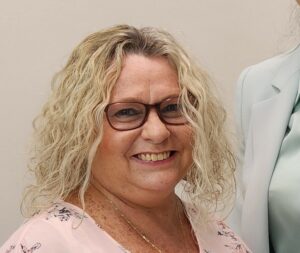
New working group aims to address Australia’s technician shortage
By onAnnouncements | International
A new working group has formed in Australia to address the nation’s skilled trades shortage within the collision repair sector.
The Australian Collision Industry Alliance (ACIA), launched in May, appointed Hiliary Bradbury as its executive director this month to further advance its initiative to build up the industry’s talent pool.
Bradbury has previous non-profit experience through her role as the local Auto Glass Association’s secretary. She also operates a family business that’s linked to the automotive industry and works daily with the collision repair sector.
In a conversation with Repairer Driven News, Bradbury said her task ahead involves increasing the industry’s attractiveness to new talent, and making career pathways easier to navigate.
“The collision repair industry in Australia is currently facing a pressing need for a new generation of skilled professionals and ACIA is at the forefront of promoting apprenticeships within the collision industry,” Bradbury said. “There is a lot of support out there, it is recognised that we need to change how it is perceived for its sustainability to encourage young talent to enter the industry and embrace how it has evolved.”
Like other regions such as Canada and the U.S., Australia is experiencing an exodus of aging skilled trades workers heading into retirement coupled with a shortage of new people pursuing careers in related fields.
ACAI’s efforts in changing that include:
-
- Creating action groups and working groups to ensure it is well-run and governed;
- Raising money through memberships and donations to fund its efforts;
- Reaching out to stakeholders for additional insights; and
- Planned research on targeted initiatives.
“We see every day how hard it is for businesses to continue and grow as the pool of skilled trades people available is aging [and] without rejuvenation it will continue to struggle,” Bradbury said. “The ACIA is laser focused on growing the number of people entering the collision industry, helping people understand the good jobs and long-term career prospects of the industry, and the exciting high-tech future it has.”
One challenge to reaching its goals is the way the public views the collision repair sector, she said, adding that many view it as outdated.
“The industry is still seen by most people as old fashioned, like the 1970s, when nothing could be further from the truth here,” Bradbury said. “Huge investment, technology and planning has gone into the Australian industry with very good career opportunities.”
The pandemic created another hurdle for shops, she said, adding it reduced staff levels and led to a strong job market that left multiple industries competing for talent.
Part of ACIA’s goal is to change perceptions about the realities of working in collision repair, and raising awareness about the opportunities within it.
“We want any career day, any career adviser, anyone thinking about a career in the trades to have access to useful, helpful information about the opportunities and careers in the collision industry,” Bradbury said. “So, helping repairers in their communities, attending the big career events, having great online resources. There’s lots to do. It’s also about bringing together a diverse and widespread industry to work together on this key industry challenge.”
The U.S. collision repair industry is also working to boost its repairer workforce through mentorships, awareness campaigns, and paid educational placements.
TechForce data indicates that within the U.S., 642,000 additional technicians will be needed through 2024, with 80,000 of those people needed within the collision repair space.
Bradbury said ACAI is interested in connecting with international organizations to learn more about the similarities between Australia’s collision industry and others around the globe and align strategies.
“There is a war for talent, everybody needs people, and so the ability to recruit I understand for this industry, globally, is not ideal anywhere, and hasn’t been good for a while,” she said. “Australian trade associations represent thousands of members across the breadth of automotive, and have worked hard, whereas we will be just focused on collision, and even more so, just on the attraction and retention of people to the industry.”
Image
Featured image: iStock/simonbradfield
Secondary image: The Australian Collision Industry Alliance Executive Director Hiliary Bradbury
